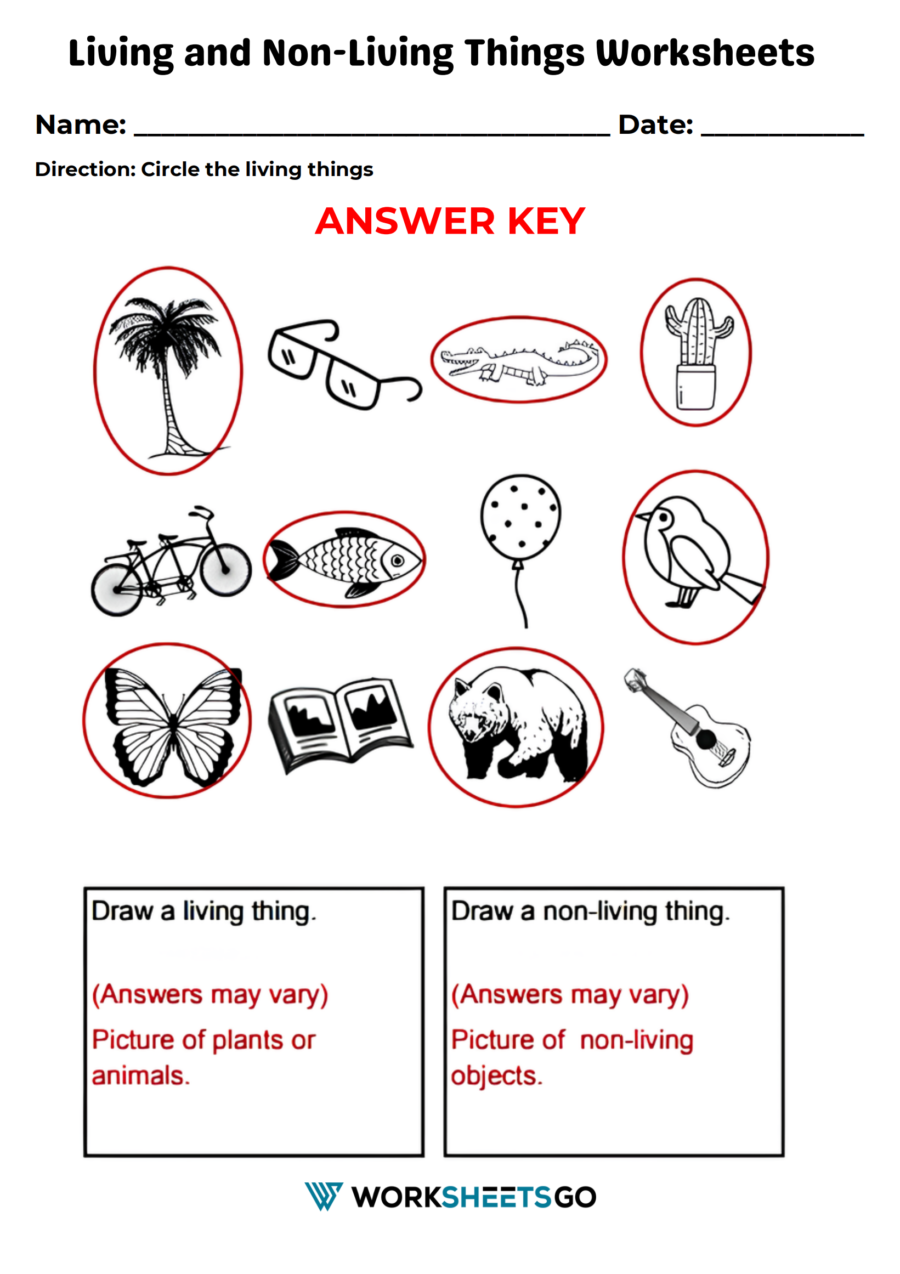Understanding the difference between living and non-living things is a fundamental science concept for kids. Introducing this topic can be made fun and interactive with the help of well-structured worksheets. Today, we’re taking a closer look at the “Living and Non-Living Things Worksheets,” an excellent resource for young learners to explore and learn about the world around them.
These worksheets are designed with engaging activities that prompt children to identify and differentiate between living and non-living items. Typically, living things are characterized by growth, reproduction, response to stimuli, and metabolism. In contrast, non-living things do not possess these life processes.
The worksheet presented features a variety of items, and the task is straightforward – circle the living things. This activity helps reinforce the characteristics of living things by presenting images such as animals, insects, and plants, which exhibit the qualities of living organisms. It contrasts these with pictures of inanimate objects like sunglasses, bicycles, and musical instruments.
For instance, in the given worksheet, children would circle the palm tree, crocodile, fish, butterfly, and bear – all of which are living. They would not circle the sunglasses, cactus in a pot, bicycle, balloon, book, or guitar, as these are non-living.
To further solidify their understanding, the worksheet includes a creative section where kids are prompted to draw their examples of living and non-living things. This part of the worksheet is particularly beneficial as it allows children to apply their knowledge creatively, reinforcing their learning through art.

Answer Key



